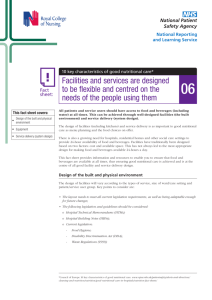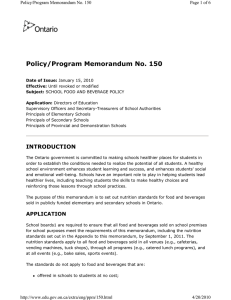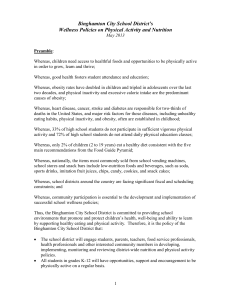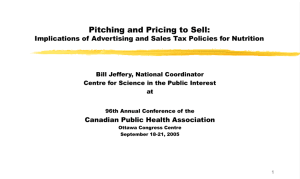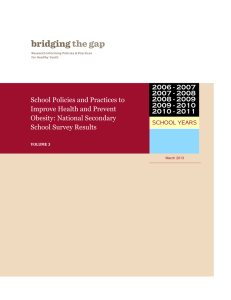The Food Revolution in Schools
advertisement
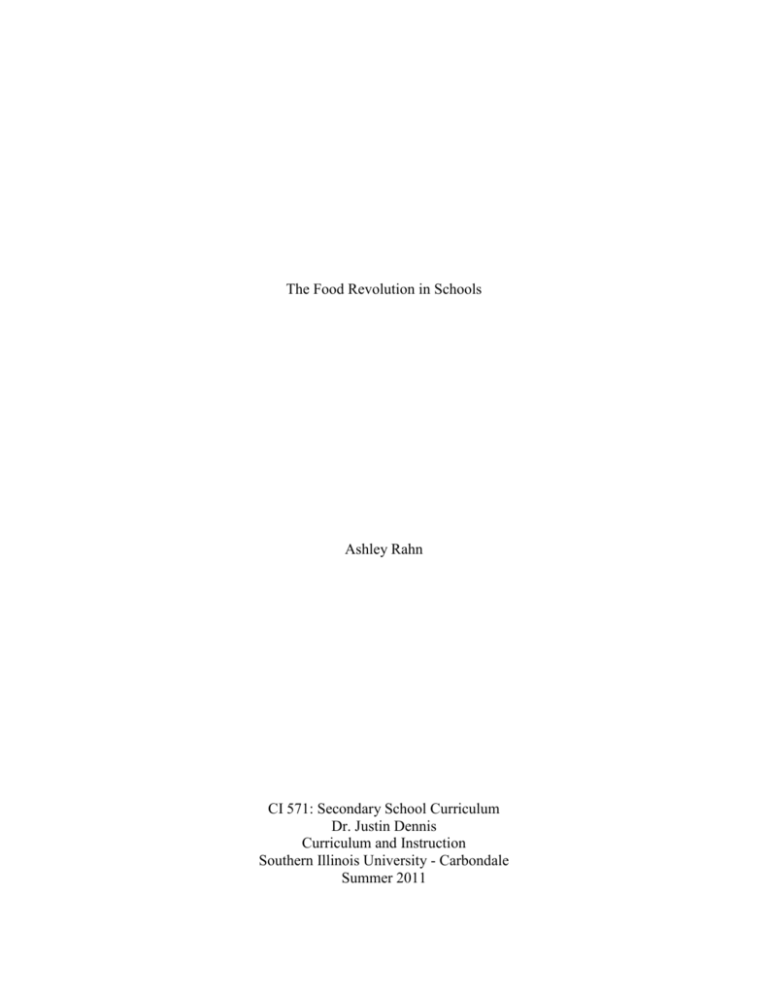
The Food Revolution in Schools Ashley Rahn CI 571: Secondary School Curriculum Dr. Justin Dennis Curriculum and Instruction Southern Illinois University - Carbondale Summer 2011 Annotated Bibliography Wojcicki, J., & Heyman, M. (2006). Healthier choices and increased participation in a middle school lunch program: Effects of nutrition policy changes in San Francisco. American Journal of Public Health, 96(9), 1-9. The San Francisco Unified School District (SFUSD) implemented a district wide change in their school nutrition policy. The change is placed upon food and beverages meeting the food minimal nutrition value, which mostly bans the sale of artificially sweetened foods and beverages. The school district also placed regulations on the sale of snack food and school entrees, the food must "contain no more than 30% total calories from fat, contain no more than 10% calories from saturated and trans fat....and must contain specified levels of vitamins, minerals, protein and fiber." Results from this study found reported the cafeteria food tasted better and increased participation in the school lunch program grew due to the lunches being free or reduced in price. Vecchiarelli, S., Takayanagi, S., & Neumann, C. (2006). Student's perceptions of the impact of nutrition policies on dietary behaviors. Journal of School Health, 76(10), 525531. The Los Angeles Unified School District (LAUSD) developed and implemented two comprehensive nutrition policies in their district: The healthy Beverage Resolution and Obesity Prevention Motion. Vecchiarelli, Takayanagi, and Neuman studied the 12thgrade student's perceptions of the two nutrition policies. The research showed that about half of the student's felt an impact on the food and beverages they ate and/or drank at school. The student's who believed the policies were positive in nature, also consumed less of the banned substances at home as well. Lastly, it was found that male student's had less favorable perceptions on the school nutrition bans. Moag-Stahlberg, A. (2004). Action for healthy kids: Focus on state teams. Topics in Clinical Nutrition, 19(1), 41-44. Fifty-one state teams across the nation have gathered to create and support the Action for Healthy Kids (AFHK). The AFHK focuses on sustainability at the state district, and school building levels, to diminish sedentary lifestyles and malnutrition in today's youth. These teams consist of education representatives as well as dieticians and nutrition professionals. Each team in their specified state creates an action plan, which focuses on developing appropriate goals that meet the needs for the state, culture, and resources. Mello, M., Pomeranz, J., & Moran, P. (2007). The interplay of public health law and industry self-regulation: The case of sugar-sweetened beverage sales in schools. American Journal of Public Health, 97(11), 13-22. In 2006, Mello, Pomeranz, and Moran researched the impact of beverage sales in school systems across America. Some school districts have stepped up to the forefront and created their own policies regarding what can and/or cannot be sold in schools. These districts in Richmond, South Carolina, Los Angeles, and Philadelphia have restricted or banned sale of soda and/or nutrient dense beverages. As of 2006 only 6 states have eliminated the sale of beverages with sweeteners. The Alliance for a Healthier Generation, "reached an agreement with Cadbury-Schweppes, Coca-Cola, and PepsiCo to curtail sales of sugar-sweetened beverages in schools." By the 2009-2010 school year 100 percent of the sugar-sweetened beverages were supposed to be "phased out." The strong point these authors made in their study primarily focused upon creating a statewide policy and/or mandate to curtail the sale of the sugary drinks in school's. French, S., Story, M., Fulkerson, J., & Gerlach, A. (2003). Food environment in secondary schools: À la carte, vending machines, and food policies and practices. American Journal of Public Health, 93(7), 1161-1167. The purpose of this study was to investigate school food policies in the à la carte menu and in the vending machines. This study took place in 20 Minnesota schools and the Trying Alternative Cafeteria Options in Schools (TACOS) intervention, found that about 35 percent of foods in the vending machines and on the à la carte menu met the "lower-fat criterion (less than or equal to 5.5 fat grams/serving). Overall the researchers found that the secondary school systems do not give the nutrition policy high priority.


